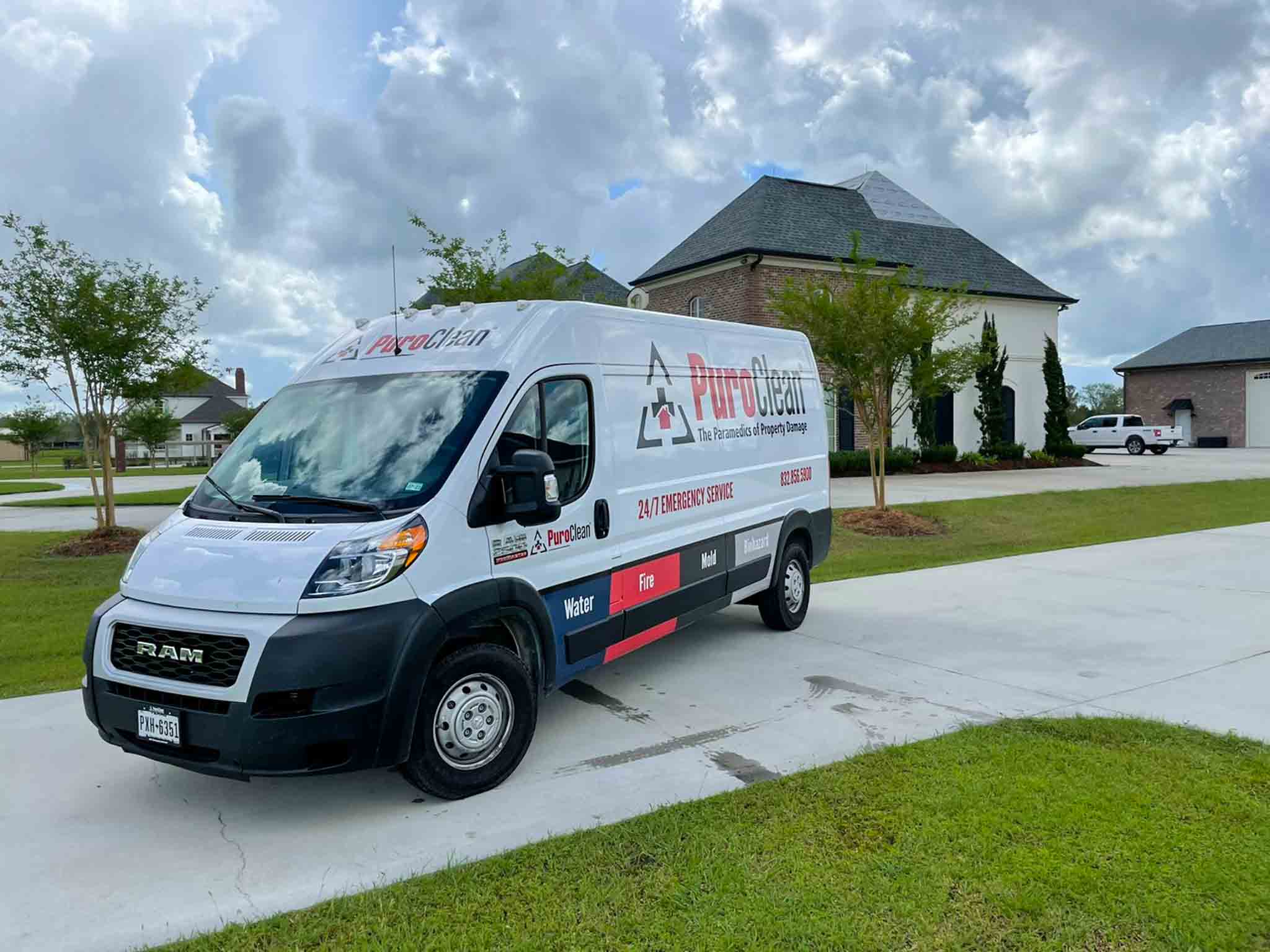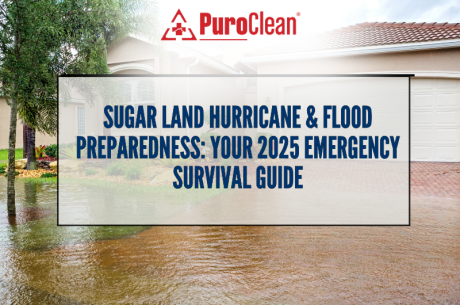Living in Sugar Land offers a unique mix of safety, community, and Texas charm—but it also means facing Gulf Coast weather risks. Between heavy rainstorms, hurricane season, and the region’s humidity, homeowners here face potential threats like:
- Flooding from storm surges and intense rainfall
- Hurricane and wind damage during summer and fall
- Mold growth in humid or water-damaged areas
- Roof leaks caused by severe weather
Without the right insurance, you could be left with costly repairs and limited protection.
But how can you be sure your current policy truly protects your Sugar Land home? With numerous providers, diverse coverage options, and complex insurance jargon, selecting the right policy can be overwhelming. This guide simplifies the process by explaining the essential coverages and giving you key knowledge to confidently protect your most valuable investment—your home.
Understanding Your Texas Homeowner’s Insurance Coverage

In Texas, a typical homeowner’s insurance policy—commonly an HO-A or HO-B form—offers protection against a variety of risks, including:
- Dwelling Coverage: Safeguards the structure of your home, including walls, roof, and foundation, from covered events such as fire, lightning, windstorms, hail, and vandalism.
- Other Structures Coverage: Extends protection to detached structures on your property, like garages, sheds, and fences.
- Personal Property Coverage: Covers your belongings inside the home—furniture, electronics, clothing, and appliances—against covered threats like theft, fire, and certain types of water damage.
- Liability Coverage: Provides financial protection if someone is injured on your property and you are legally responsible, helping cover medical bills and legal costs.
- Additional Living Expenses (ALE) / Loss of Use: Helps cover extra living costs if your home becomes temporarily uninhabitable due to a covered loss. This can include hotel stays, temporary rent, meals, and other essential expenses while repairs are made.
Sugar Land Homeowners Insurance: What You Need Beyond Standard Coverage
While a standard homeowner’s insurance policy forms the foundation of protection, Sugar Land’s unique weather and environmental risks make it important to understand what may not be included in your coverage.
Essential Coverages You Can’t Overlook
Given Sugar Land’s susceptibility to storms, heavy rainfall, and humidity, certain coverages often require separate policies or endorsements (add-ons) to your standard homeowner’s insurance.
1. Flood Insurance: Non-Negotiable Protection
Is coverage included?: No. Standard homeowner’s insurance does not cover flood damage. Rising water, storm surge, overflowing rivers, or heavy rainfall that enters your home from the ground up is excluded.
Why it’s essential for Sugar Land: Flooding can happen anywhere—even outside designated flood zones. Localized heavy rainfall or hurricane-related flooding is common in the area. Many flood claims in the Houston metro area originate outside mapped floodplains.
How to get it: Flood insurance is available through the National Flood Insurance Program (NFIP), administered by FEMA. You can purchase a policy through your insurance agent. Keep in mind, there’s usually a 30-day waiting period before a new policy takes effect.
2. Windstorm and Hail Insurance: Coastal and Storm Considerations
Is coverage included?: It depends. Standard policies typically cover wind and hail for most inland Texas areas. However, properties near the coast or certain areas around Galveston Bay may need separate coverage.
Why coverage is essential for Sugar Land: Hurricanes and tropical storms can bring strong winds and hail. Even if your standard policy covers wind damage, separate wind/hail deductibles may apply, often based on a percentage of your dwelling coverage.
How to get coverage: If excluded, you may need a separate windstorm policy, often through the Texas Windstorm Insurance Association (TWIA). Your agent can help determine your needs. The Texas Department of Insurance (TDI) offers helpful resources.
3. Sewage Backup Coverage: Protecting Against the Unpleasant
Is coverage included? No. Damage from sewer or drain backups, or sump pump overflows, is typically excluded.
Why coverage is essential in Sugar Land: Heavy rainfall can overwhelm municipal systems, causing backups that flow into homes. Blocked plumbing can also lead to sewage damage, which is costly and poses serious health risks.
How to get coverage: Purchase a “sewer backup” or “water backup and sump pump overflow” endorsement. It’s usually affordable and can save thousands in repair and cleanup costs.
4. Mold Coverage: Managing Humidity Risks
Is coverage included? Partially. Standard policies often cover mold from sudden, accidental events (like a burst pipe) but exclude mold from long-term leaks or humidity—common in Sugar Land. Many policies have sub-limits on mold remediation, often far less than actual costs.
Why coverage essential for Sugar Land: The area’s warm, humid climate accelerates mold growth. Even small leaks can quickly become widespread infestations.
How to get coverage: Review your policy carefully. Some insurers offer mold endorsements. Preventive measures—prompt water repairs and controlling indoor humidity—are key. The Texas Department of Insurance (TDI) provides guidance on mold coverage.
5. Biohazard Cleanup: Handling the Unexpected
Is coverage included?: It depends on the cause. Standard insurance may cover biohazard cleanup only if it results from a covered peril (like a fire or sewage backup with an endorsement). Other situations—such as crime scenes or unattended deaths—usually require specialized coverage.
Why coverage is essential: Biohazard cleanup requires specialized equipment, training, and strict safety protocols.
How to get coverage: Discuss your policy with your insurance agent to determine what it covers and whether additional riders are available for biohazard risks.
Sugar Land homeowners should carefully review their insurance policies to ensure these critical gaps are addressed. Taking these steps now can save stress, money, and risk when the unexpected happens.
Sugar Land Homeowners Insurance: Choosing the Right Policy and Protecting Your Home
Call Us: (281) 916-2002
Navigating insurance options can be overwhelming, but a strategic approach helps you find the best fit for your Sugar Land home.
1. Assess Your Property Risks
Identify your home’s specific vulnerabilities. Is it in a flood-prone area? Are older plumbing systems a concern? Is your neighborhood susceptible to windstorms or hail? Use the Sugar Land Floodplain Maps to check flood risk for your property.
2. Review Your Current Policy Carefully
Don’t assume coverage—you need to read your policy declaration page and booklet thoroughly. Pay attention to exclusions, limitations, and deductibles to avoid surprises during a claim.
3. Talk to a Knowledgeable Insurance Agent
Work with an agent who understands Sugar Land’s unique weather and environmental risks. They can help compare policies across carriers and recommend endorsements to fill coverage gaps.
4. Replacement Cost vs. Actual Cash Value
- Replacement Cost Value (RCV): Covers the full cost to replace damaged property with new materials of similar kind and quality—without depreciation. Preferred for most homeowners.
- Actual Cash Value (ACV): Pays the depreciated value of your property, often less than the cost of replacement.
5. Understand Your Deductibles
A deductible is what you pay out-of-pocket before insurance coverage begins. Higher deductibles usually mean lower premiums, but ensure you can afford the cost if you file a claim. Note that separate deductibles may apply for wind, hail, or hurricane damage.
6. Avoid Underinsurance
Make sure your dwelling coverage is enough to rebuild your home at current construction costs, not just its market value. Construction costs can fluctuate.
7. Create a Home Inventory
Document your belongings with photos, videos, and estimated values. A detailed inventory speeds up the claims process if items need replacing.
8. Shop Around
Compare quotes from multiple insurance providers. Use the Texas Department of Insurance (TDI) website to ensure you get the best coverage for your needs.
When Disaster Strikes: How PuroClean Advocates for You
Even with the best insurance, filing a claim after property damage can be stressful. PuroClean of Sugar Land is your trusted partner, helping streamline the process and protect your interests.
Our role includes:
- Detailed Documentation: Photos, videos, and moisture readings create an irrefutable “digital paper trail” for your claim.
- Industry-Standard Estimates: We use Xactimate software to prepare detailed, itemized estimates recognized by insurance companies.
- Direct Communication with Adjusters: Our team coordinates with your insurance adjuster, answering technical questions and clarifying the scope of work for a fair settlement.
- Guidance Through the Process: We help you understand claim steps and your policy coverage, simplifying complex paperwork and requirements.
- Preventing Secondary Damage: Rapid, professional response mitigates further damage (like mold), protecting your home and supporting your claim.
Your Peace of Mind Is Our Priority
Choosing the right insurance policy in Sugar Land is a proactive step to protect your home, finances, and peace of mind. By understanding your risks, reviewing your coverage, and partnering with knowledgeable professionals, you can safeguard your property before disaster strikes.
If the unexpected happens, PuroClean of Sugar Land South restores your home with expertise and compassion while guiding you through the insurance claim process.
Don’t wait—review your policy today. For expert property restoration in Sugar Land, call PuroClean at (281) 916-2002.




 PuroClean of Sugar Land South
PuroClean of Sugar Land South